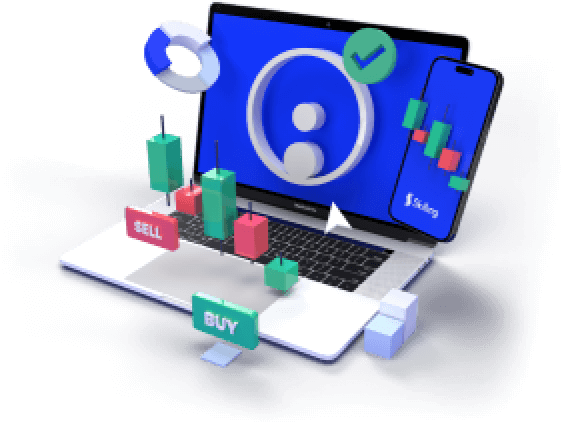The US equity market has entered a period of unusually low volatility in 2025. The CBOE Volatility Index (VIX), often called the “fear gauge,” has traded near 12 for much of the summer. This is well below its historical average of around 20, and far from the 30–40 spikes seen during the pandemic and the 2022 inflation scare.
Periods of subdued volatility are often welcomed by investors, as they signal confidence and stability. But experienced traders typically know that extended calm can set the stage for sharp reversals once uncertainty returns.
Access 1,200+ global CFDs instruments.
Access a plethora of trading opportunities across the financial markets.

What the VIX Measures
The VIX is based on options pricing for the S&P 500 and reflects market expectations of volatility over the next 30 days. A reading below 15 suggests markets anticipate low turbulence, while a reading above 25 signals heightened concern.
When the VIX stays suppressed, it usually means investors expect steady growth, predictable monetary policy, and limited shocks. But historically, such periods rarely last.
Risks After Extended Calm
Markets often move from calm to sharp volatility when catalysts emerge. Past examples include:
- Surprise interest rate shifts from the Federal Reserve
- Geopolitical conflicts or sudden policy changes
- Corporate earnings shocks
- Economic data releases far from expectations
A prolonged low VIX can create investor complacency. This increases the risk of disorderly reactions when uncertainty reappears.
The Fed’s Role: September 17, 2025
The next Federal Reserve meeting on September 17 could play a decisive role in shaping volatility. Two scenarios stand out:
If the Fed lowers rates:
A rate cut could calm markets at first, pushing the VIX below 12. But if the move is seen as a response to weakening growth, volatility could spike afterwards. In that case, the VIX could quickly rebound above 20 as recession fears spread.
If the Fed holds steady:
Keeping rates unchanged may reinforce stability and keep volatility muted. Yet, long periods of calm often set the stage for sudden turbulence. Any negative surprise later could trigger an outsized reaction, sending the VIX sharply higher.
In both cases, traders must prepare for the possibility of a volatility shock once the market reassesses the Fed’s signal.
Strategies for Traders
Active traders often adapt to periods of low volatility by:
- Using range-trading strategies based on support and resistance levels
- Employing options spreads to capture premium when volatility is low
- Preparing for breakout trades if volatility suddenly expands
- Adjusting position sizing and stop levels based on real-time VIX readings
Risk control is essential. A low VIX can lull traders into overconfidence, but sharp spikes can erase gains quickly.
Conclusion
Low volatility in 2025 reflects market calm, but history shows it never lasts forever. With the Fed’s September meeting approaching, traders should stay alert. Whether rates are cut or left unchanged, the VIX may not remain quiet for long.
FAQs
1. What is the VIX?
The VIX is an index measuring expected volatility in the S&P 500 over the next 30 days, often called the “fear gauge.”
2. Why is low volatility important?
It often signals stability, but can also create complacency. When uncertainty returns, volatility tends to spike.
3.How does the Fed affect the VIX?
Fed policy changes can shift market sentiment. A rate cut or a surprise hold often triggers volatility swings.
4. How can traders use the VIX?
Traders often use it to gauge sentiment, manage risk, and decide when to apply breakout, range, or options strategies.
5. What risks follow long periods of low volatility?
Extended calm often leads to sharper corrections once shocks hit the market.
Capitalise on volatility in index markets
Take a position on moving index prices. Never miss an opportunity.












